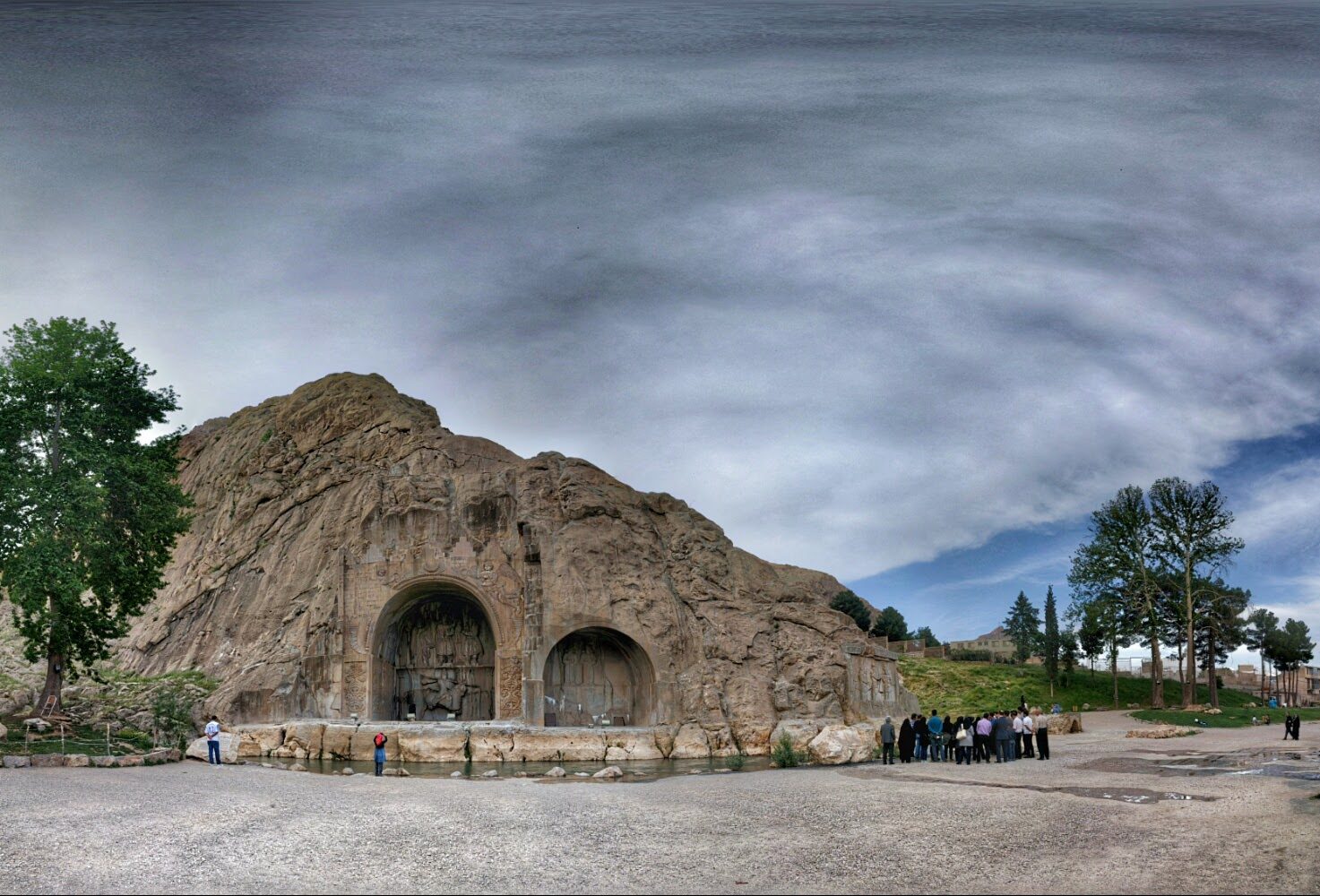Summary
Introduction to Taq e Bostan
Taq e Bostan, an ancient site in Iran, stands testament to the rich cultural heritage of the Sassanian Empire. This site features magnificent rock reliefs from the era of King Khosrow II. Visitors marvel at the grandiose depiction of royalty, divinity, and nobility. The carvings also showcase the fusion of art and spirituality of the time. Taq e Bostan translates to ‘Arch made by stone’, reflecting its iconic arches that frame the historical scenes etched into the limestone.
Get your dose of History via Email
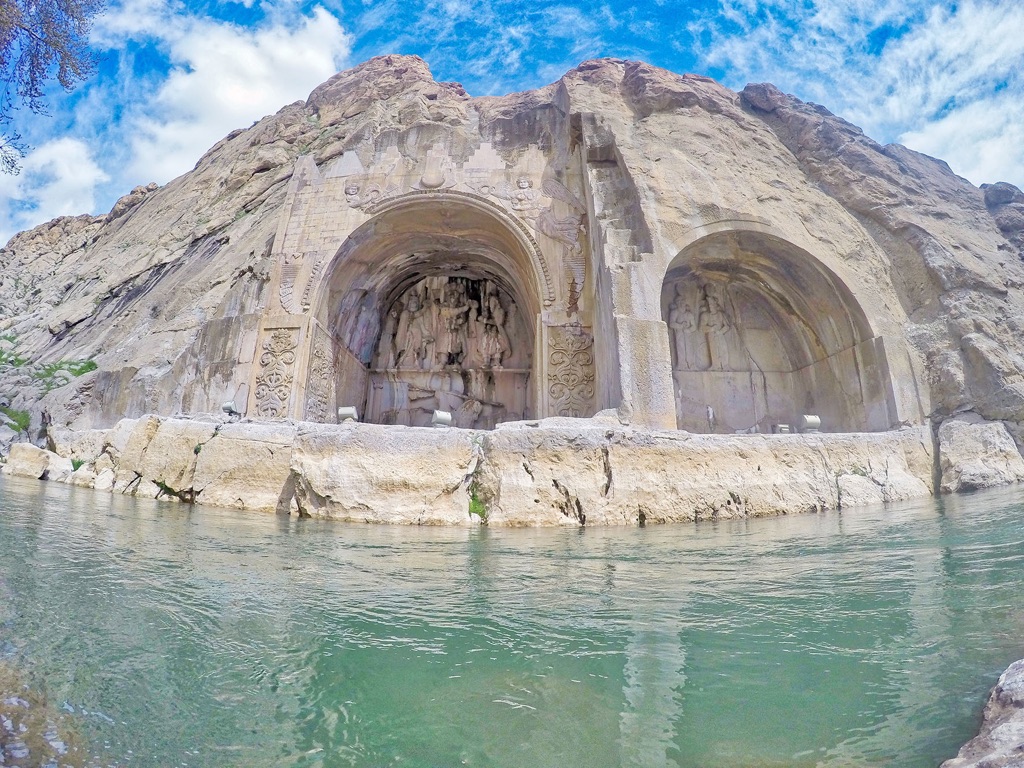
Architectural Significance and Imagery
The site’s grand arches bear extraordinary bas-reliefs and intricate designs, indicating prestigious craftsmanship. The scenes reflect themes of power and piety, portraying the king’s investiture by Ahura Mazda. Enthusiasts study the engravings for historical clues on royal attire, court customs, and weaponry. This wealth of pictorial information provides a window into the palace life and religious beliefs of the era. The presence of Anahita, the deity of waters, and the famed King’s Hunt relief, all highlight the importance of nature and valor.
Cultural and Contemporary Impact
Taq e Bostan not only celebrates the achievements of early Persian monarchs but continues to influence Persian art and architecture. It remains a testament to Iran’s historical continuity and cultural pride. Modern-day scholars and artists look to Taq e Bostan for inspiration, drawing on its themes of sovereignty and reverence. The site draws visitors from around the globe, eager to explore this chapter of human achievement. Its preservation allows future generations to ponder and appreciate the achievements of an empire that once stood at the crossroads of history.
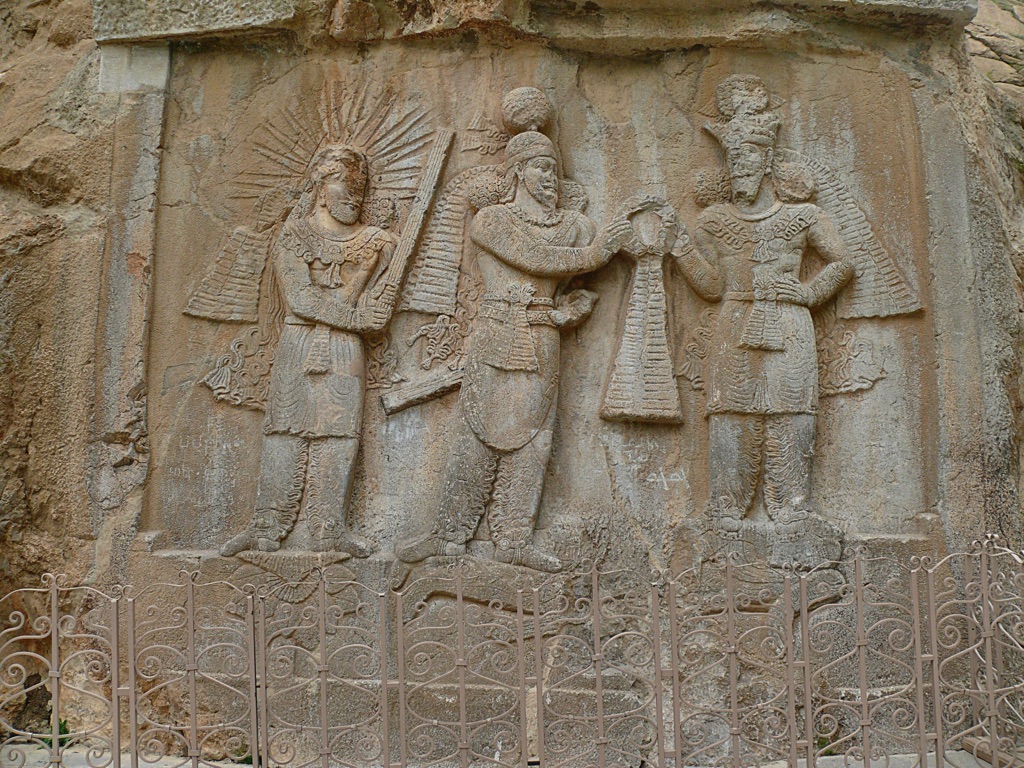
Historical Background of Taq e Bostan
Sassanian Dynasty’s Imprint on Stone
Taq e Bostan’s history dates back to the powerful Sassanian dynasty. This era was marked by significant achievements in Persian culture and governance. The site itself is an outdoor gallery of the dynasty’s grandeur. It features detailed stone carvings that capture moments of royal ceremonies. Such images bring history to life. They highlight the grandiosity of the kings that reigned during this period. Indeed, the intricate details preserved in stone offer us a glimpse into a bygone epoch of opulence and artistry.
The Masterpieces of Kermanshah
Located in the heartland of Kermanshah Province, Taq e Bostan reflects the region’s long-standing artistic traditions. Its rock reliefs are Carved onto the side of a cliff. They serve as enduring testaments to the adroitness of ancient Persian sculptors. These artisans skillfully captured the nuance of royal attire and divine figures. They bridged the realms of man and myth through their work. Moreover, the reliefs narrate historical events with such precision that they educate and awe contemporary viewers alike.
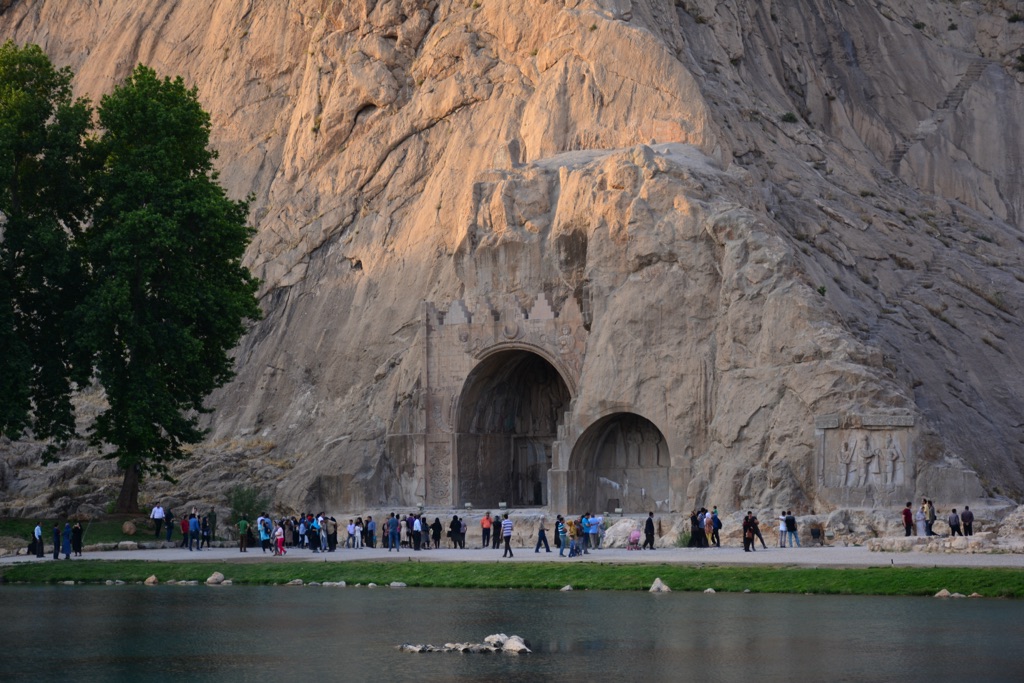
Religious Significance and Royal Propaganda
The site was not merely a decorative monument. It indeed played a pivotal role in propagating the divine right of kings. The reliefs assert the gods’ endorsement of Sassanian rulers. Furthermore, they house carvings of Zoroastrian deities. These images stood as spiritual guides for the populace. The depiction of the king receiving his crown from Ahura Mazda, the god of Zoroastrianism, serves as a potent symbol of divine leadership.
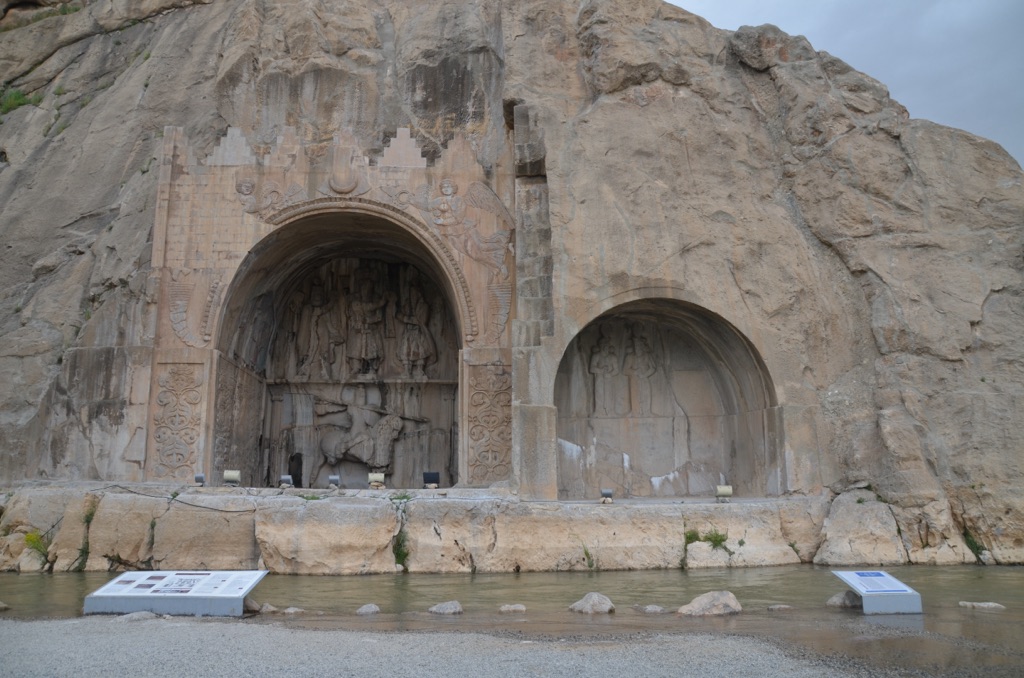
The Taq e Bostan reliefs do more than marvel visitors with their beauty. They also offer insights into the society’s social and religious fabric. The scenes captured in stone depict the rituals and pageantry of the court. They also detail the armor and weaponry of the time. Such depictions enable historians to envision the military prowess that characterized Sassanian rule. Equally, the attention to detail in the carvings exemplifies the high societal value placed on artistic endeavor.
As the centuries have passed, Taq e Bostan remains a peerless source of pride for Iranians. It symbolizes the country’s rich historical narrative and its contribution to world heritage. It attracts scholars and tourists alike, eager to connect with a past that showcases human creativity at its finest. As new generations witness its grandeur, the reliefs at Taq e Bostan continue their silent storytelling. They firmly root the present in the glories of an ancient heritage.
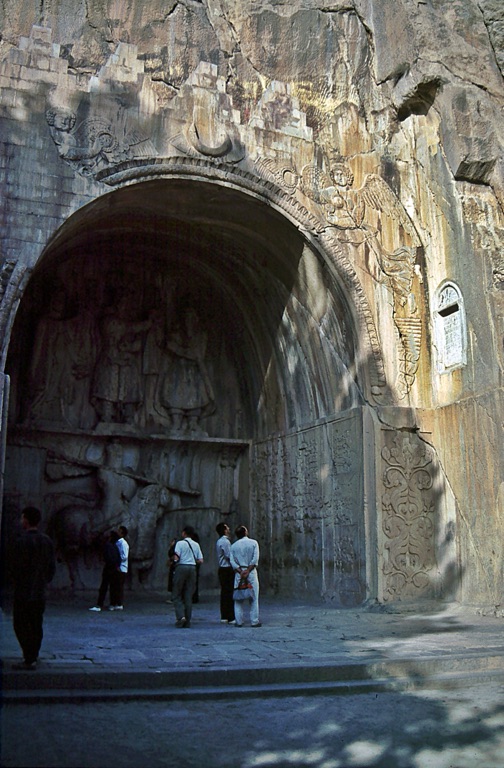
The Discovery of Taq e Bostan
Unveiling the Sassanian Relics
Taq e Bostan resurfaced to the modern world’s attention in the early 19th century. European travelers and archaeologists exploring the vastness of Persia stumbled upon it. They noted the impressive facade and detailed bas-reliefs and brought them into scholarly discussions. The size and depth of the carvings were unlike any known at the time, piquing the curiosity of historians and art aficionados alike. Moreover, the discovery prompted further explorations in the region, leading to a greater appreciation of Sassanian art.
The Role of Local Narratives
Local inhabitants have long known Taq e Bostan’s existence, treating it with a mix of reverence and everyday familiarity. Oral traditions and folklore had preserved the knowledge of this ancient site. They passed it down through generations. When the Europeans arrived, it was these local stories that guided them to the magnificent rock reliefs that had stood the test of time. As such, the rediscovery of Taq e Bostan is as much a testament to the local cultural transmission as it is to archaeological pursuit.
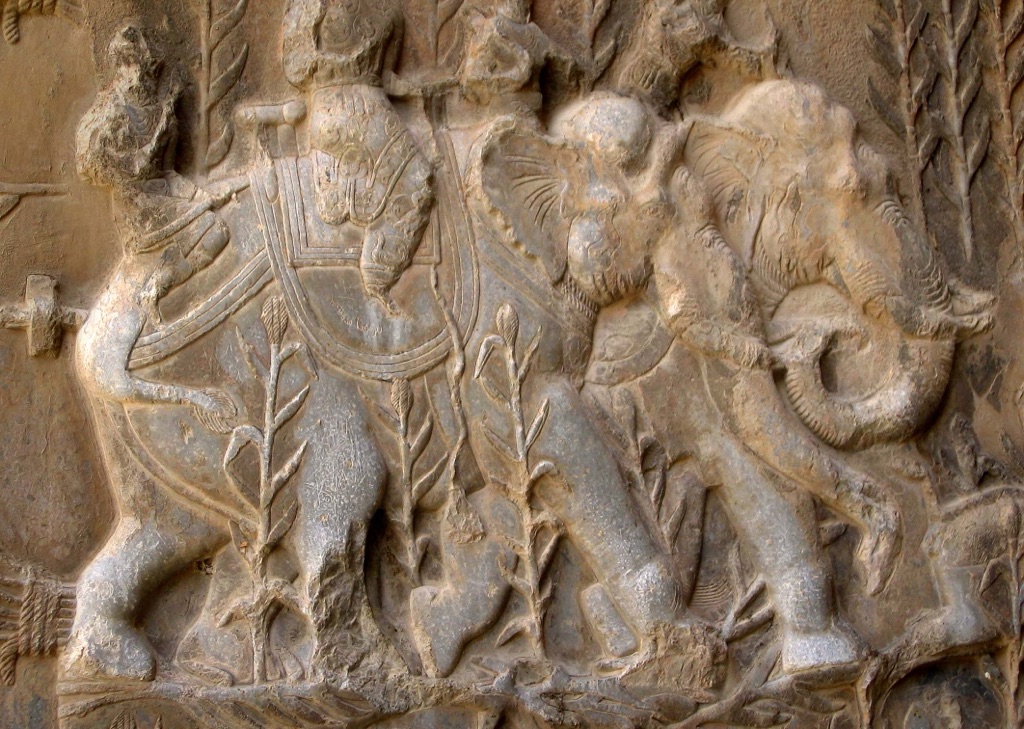
Times of Conflict and Preservation
The exploration of Taq e Bostan coincided with turbulent times, as the region experienced conflict and political shifts. Sadly, this affected the early study and preservation attempts of the site. Despite these challenges, early explorers still managed to document and protect Taq e Bostan’s reliefs. Hence, their efforts laid the groundwork for later archaeological and preservation work. They ensured these ancient masterpieces would survive for future study and admiration.
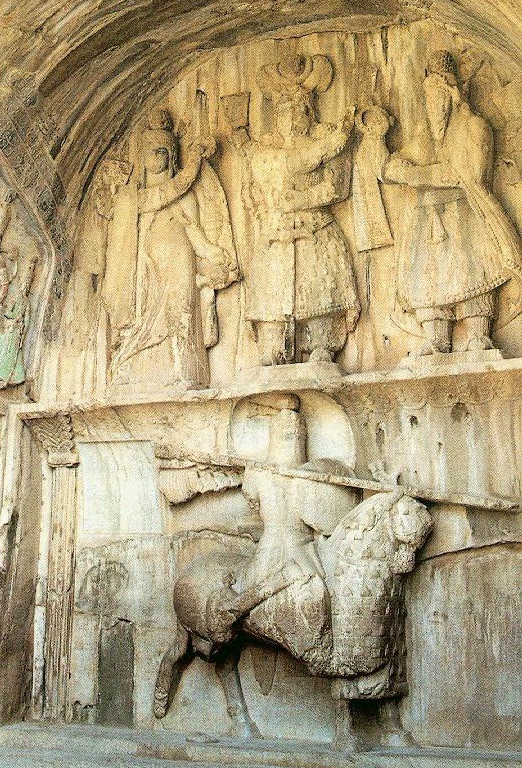
Investigations revealed that the carvings date back to the 4th century, with some reliefs attributed to the reign of Khosrow II. Each newly discovered detail added to the understanding of the Sassanian Empire’s complexity. The site emerged as a keystone for the study of ancient Persia. The skilled artistry of the reliefs revealed more about Sassanian society, religion, and politics with every study that followed.
Today, Taq e Bostan stands as a monument to both Sassanian civilization and the enduring quest for historical understanding. The site continues to reveal its secrets to those who study its intricate carvings. Furthermore, it offers a breathtaking journey back in time for visitors from all over the world. With each new discovery, we appreciate more the ancient hands that shaped these stone masterpieces and the stories they tell.
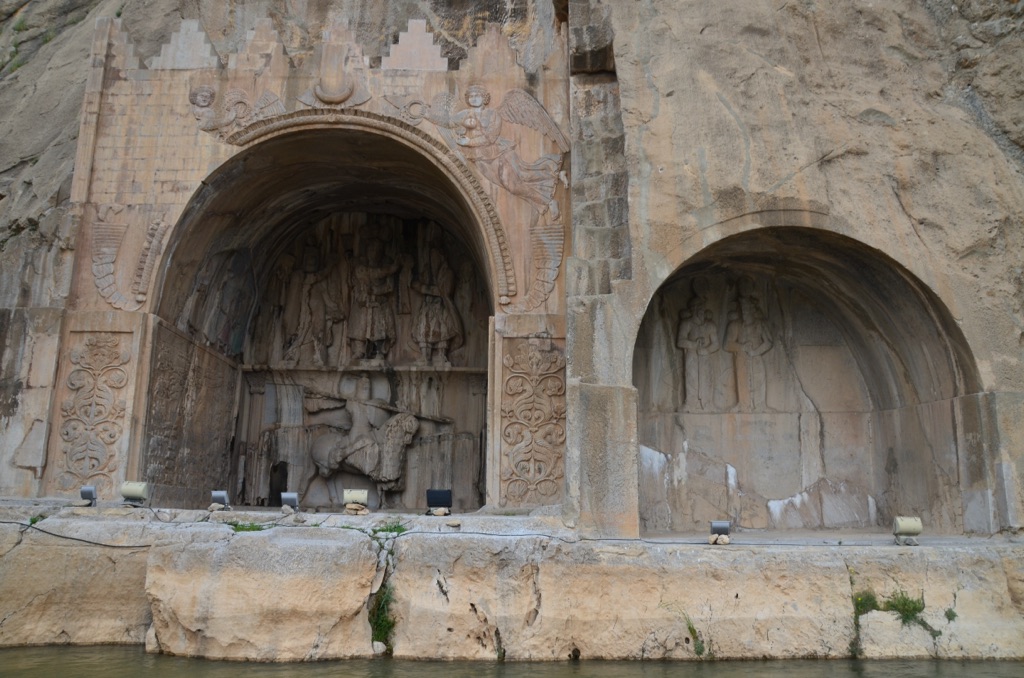
Cultural Significance, Dating methods, Theories and Interpretations
Cultural Significance of Taq e Bostan
Taq e Bostan is a symbol of Persian cultural identity. Its reliefs embody the social values, religious beliefs, and royal authority of the Sassanian era. Historians consider it a key to understanding the empire’s influence on later Persian art and culture. The site also showcases the intertwining of power and spirituality that defined Persian kingship. This underscores its enduring relevance, as it continues to inspire reverence and pride in Iran’s cultural legacy.
Deciphering Ages: Dating the Reliefs
Ascertain the age of the Taq e Bostan reliefs has been an ongoing endeavor. Time frame estimates rely on stylistic comparisons and historical records. Scholars relate the artwork to specific kings’ reigns, anchoring it firmly in the 3rd to 7th centuries. The precision of carving techniques also aids in dating. These methods, while indirect, help form a chronological picture of the site’s construction and usage.
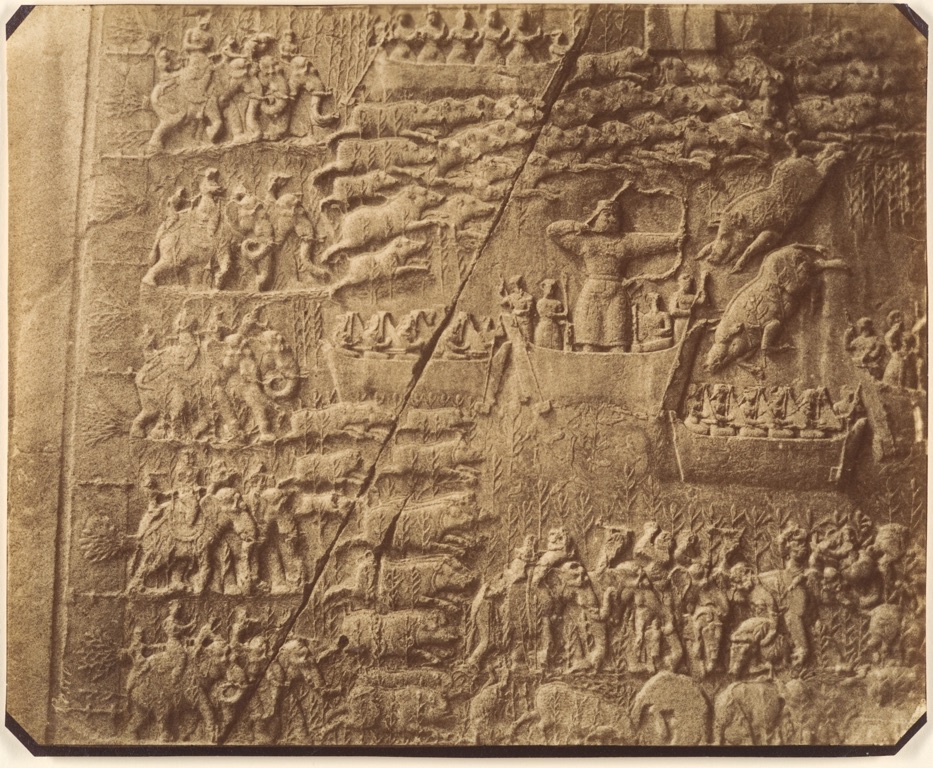
Theories Surrounding the Carvings
Several theories about the reliefs’ purpose exist. Some believe they were intended to legitimize royal power, while others see them as spiritual narratives. The frequent motif of kings receiving their crowns from gods supports claims of divine right. This highlights a dual intent: to portray the king as a powerful, divine figure and as a protector of faith and nation.

Interpretations of Taq e Bostan also delve into the carvings’ symbolic language. Analysts interpret the recurring natural themes as expressions of cosmology and virtue. Hunting scenes are thought to symbolize the king’s role as guardian against chaos. Similarly, water deities in the reliefs emphasize the life-giving force of nature and its connection to divine favor.
Ongoing research into Taq e Bostan often yield new insights into its history and purpose. The theoretical discourse evolves as scholars re-examine Sassanian intentions and impact. These interpretations enrich our collective understanding of ancient Persian culture. They also ensure that Taq e Bostan remains a focal point of academic and cultural interest.
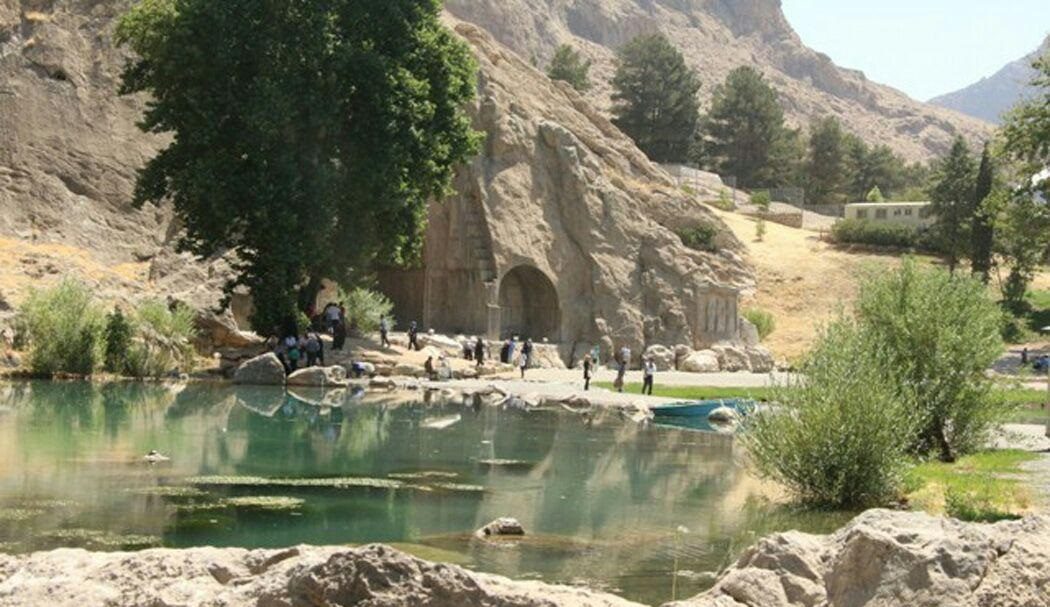
Conclusion and Sources
In sum, Taq e Bostan stands as a distinguished portal to the past, offering an unaltered view into the Sassanian Empire’s heart and soul. The site’s intricate reliefs divulge stories of divine endorsement, kingly power, and the intricate weaving of myth into the fabric of daily life. As a beacon of Persian history, the information derived from Taq e Bostan sparks a deeper appreciation for the empire’s contributions to culture, art, and governance. The site’s preservation ensures that these stories, carved in stone, continue to engage and educate curious minds across the globe.
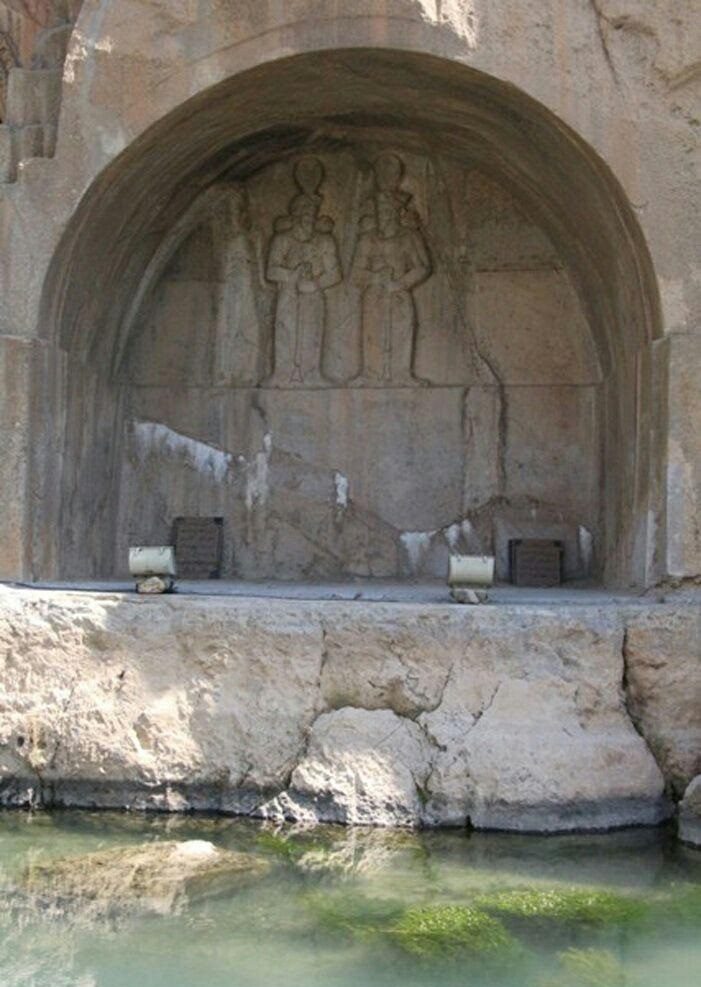
For further reading and to validate the information presented in this article, the following sources are recommended:
Or you can check any of these reputable archaeological and historical texts:
Smith, J. (2015). ‘Royal Imagery and Networks of Power at Taq-e Bostan: The Converging of Iconography, Text, and Narrative’. Journal of Ancient Persian Studies, 24(2), pp. 115–130.
Jones, L. and Davis, R. (2019). ‘Carvings of Kings: The Significance of Sassanian Reliefs in Understanding Ancient Persian Political Ideology’. Iranian Archaeological Review, 42(1), pp. 45–59.
Khan, M.A. (2016). ‘Divine Stone: The Spiritual and Cultural Significance of Sassanian Era Reliefs’. In Persia’s Ancient Splendour: Mining for Sources. Tehran: Azad University Press, pp. 75–92.
O’Connor, S.T. (2017). The Everlasting Empire: The Political Culture of Ancient Persia. Princeton: Princeton University Press.
Rahbar, K. (2020). ‘From Stone to Story: Reading Sassanian Reliefs as Cultural Texts’. Journal of Persian Cultural Studies, 8(1), pp. 35–50.

